Aluminum heating radiators: overview of technical characteristics + installation principles
Despite the variety of modern bimetallic and steel heating devices, aluminum heating radiators remain as popular as ever.
The reasons for their popularity are excellent performance characteristics, sleek design and reasonable prices, which are crucial for some property owners.
In this article we will talk about the pros and cons of aluminum radiators, their varieties, and also figure out how to install the device yourself.
The content of the article:
Pros and cons of aluminum radiators
Over the past half century, nothing has changed with regard to aluminum radiators - they are also actively used to equip heating systems of public institutions and multi-apartment residential buildings. Neat, lightweight and easy to install, the devices are also readily purchased for the improvement of private homes.
Aluminum radiators have several undoubted advantages, and often they “outweigh” the disadvantages (which also exist) and are the decisive arguments in the choice.
According to user reviews, aluminum devices harmoniously complement the interior of rooms, and if they stand out from the overall picture with their industrial design, they are easily disguised decorative screen or box with holes.
But batteries made of relatively soft metal also have their weaknesses, including:
- A characteristic feature of aluminum is to enter into chemical reactions with the coolant, resulting in the formation of corrosion and gases;
- Air vent valves prevent air locks from occurring;
- low resistance to high pressure and water hammer, typical of central highways;
- sensitivity to incorrect installation - installation errors can disrupt the uniform distribution of coolant throughout all sections.
Due to the listed technical characteristics, experienced installers do not recommend equipping circuits dependent on the central line with aluminum heating radiators.
The system operates in such a way that it is not excluded water hammer, sudden change in pressure. Due to instability, the most unprotected places - joints and connections - can fail.
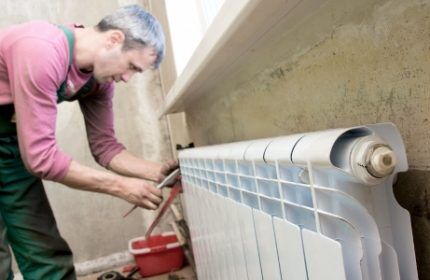
Due to the listed disadvantages, it is better to connect aluminum devices to a more stable cottage heating system. It is protected not only from water hammer, but also from low-quality coolant. If you still choose an aluminum battery for a high-rise building with main heating, it is better to prefer anodized models.
Classification of batteries by manufacturing technology
For the production of heating radiators, it is not aluminum in its pure form that is used, but its alloys with silicon. Separate sections and whole products are obtained from blanks. The main methods of metal processing are extrusion and casting.
Type #1 – extrusion
On production lines, the main tool for the manufacture of extrusion devices is a molding extruder, which literally extrudes the required profile onto metal blanks.
The disadvantage of the technology is the production of separate parts, which are subsequently connected by pressing. Of course, the seams on the structure make it vulnerable to pressure changes and unclean coolant.
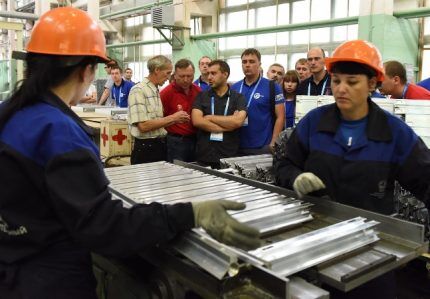
Extrusion models are the most inexpensive among aluminum ones.They are characterized by a smaller working surface area, which reduces the heat transfer of devices. The seams obtained as a result of pressing are gradually destroyed by contact with low-quality coolant.
The corrosion process is also more active because secondary aluminum is used as a raw material for extrusion, a characteristic feature of which is the presence of rapidly oxidizing impurities.
Type #2 – cast
Radiators produced by casting technology have higher performance indicators. They are safer, stronger and more resistant to aggressive environments than their extrusion counterparts, and therefore more expensive. For manufacturing, aluminum (from 88%) and alloys with the introduction of silicon (up to 12%) are used.
Production occurs as follows. The molten metal enters the casting molds, where it acquires a given profile. The parts that have received the design configuration are cooled, processed and checked for leaks. The walls of the workpieces are treated on all sides with an anti-corrosion compound.
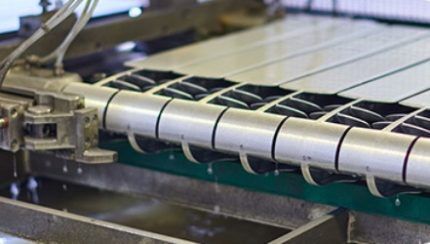
Various manufacturers are experimenting with casting technology, resulting in new types of radiators. Let's say the Faral Trio company has released a line of two-channel radiators that have not lost strength and cope well with burst pressure of more than 55 atm.
And Italian Raden radiators have vertical fins of 6 rows, due to which there is an increase in heat transfer.
If you want your heating system to be equipped with truly reliable and protected devices, pay attention to anodized batteries.These are radiators made of aluminum coated with a durable oxide film, which has two purposes - protection and decoration.
The oxidation process several times increases the metal’s resistance to corrosion and other negative changes or reactions to the poor quality of the liquid circulating through the channels of the devices.
Technical characteristics overview
When purchasing heating radiators, it is important to consider not only the appearance or connection method, but also the functional characteristics on which the operation of the heating system will depend. It is important to remember the pressure in the network and the properties of the circulating fluid.
In addition to other characteristics, the maximum coolant temperature is also indicated. On average it is +110 °C, but real values are usually lower. For example, in urban conditions they usually do not exceed the threshold of +60-70 °C (in a partially cooled state, and at the exit it is usually about +90 °C).
DIY installation instructions
If you have experience in such work, you can install the batteries yourself. For wall mounting, in addition to aluminum heating radiators, you will need brackets and a set of tools, but first you need to study some of the provisions regulated by SNiP 41-01-2003 and general installation rules.
Battery Installation Requirements
Radiators are heating devices with a coolant circulating inside, the temperature of which is higher than room temperature, so it is important to maintain the minimum distances from the device body to the nearest significant objects:
- from the bottom to the floor – 4 cm;
- from the top to the window sill - 5 cm;
- from the surface adjacent to the wall to the plastered wall - 2.5 cm.
But there are also exceptions. If the window is located too low, the upper edge of the device is installed flush with the window sill, while the lower edge should rise above the floor by at least 3 cm. If the window sill interferes with air movement, the distance between the window and the radiator can be increased to 8 cm.
When replacing a radiator, the location of the pipes does not change; it is only important to select a heating device according to the connection method and size.But when installing a new heating system, the pipes must be installed correctly.
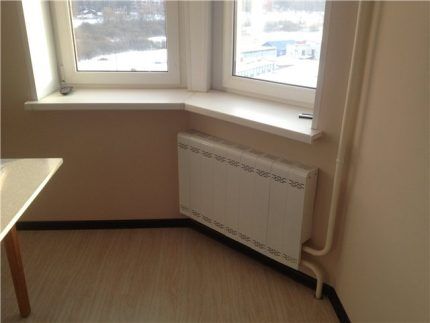
For fastening, use brackets (shelves, studs) or stands. The number of brackets depends on the heating area of the radiator: for every 1 m² - 1 piece. (minimum 3 pieces for one radiator). Open installation of batteries, without camouflage screens and structures, is encouraged, since the amount of heat transfer is greater.
If the installation takes place in an apartment building, before installing or replacing the radiator, it is necessary to agree on temporarily disconnecting the circuit from the network. This is usually done by representatives of the building management (plumbing).
What tools and fittings will be required?
The necessary tools for assembling and connecting radiators are wire cutters, wrenches, pliers, sandpaper, a brush and cleaning lubricant, a pipe cutter, and a chamfer remover. To secure the brackets to the wall, you will need a drill with a Pobedit drill bit and a set of dowels.
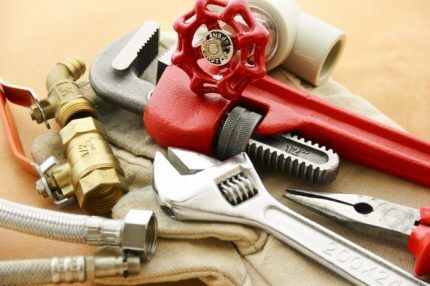
Additional parts that may be required:
- shut-off and control valve (regular or for installing a thermal head);
- manifold adapters with seals;
- Mayevsky crane (for maintenance - air bleed);
- connecting tubes made of stainless steel;
- fasteners for taps (nuts, washers).
High-quality shut-off valves and professionalism in sealing connections are the key to long and trouble-free operation of aluminum heating devices.
Work order
First, prepare the holes on the radiators at the junction with the pipes: clean with a brush or brush, wipe with a technical cleaner (you can use a brake cleaner). If necessary, adapters from one diameter to another and American ones are installed. Next, the pipes are prepared in the same way, then the radiator is attached and installed.
An example is replacing an old cast iron radiator with a new aluminum analogue.
Decorative wall decoration and pipe painting is done last. Upon completion of all work, reconnect the riser and check the operation of the radiator. If it heats up quickly and evenly, the installation is correct.
Detailed instructions for installing heating radiators with your own hands can be read in this material.
Conclusions and useful video on the topic
Installation of various models of aluminum batteries is carried out taking into account certain features, but the basic rules for connection and installation are approximately the same.
The entire installation process, from processing the entrance holes to installing on the wall:
Example of assembly using sealant:
Installing an aluminum radiator does not take much time if you have the necessary tools at hand and have the skills to work with metal. But no matter how much experience you have at the time of installation, you must act strictly according to the instructions that come with the new model.
Do you have personal experience installing or using aluminum radiators? Please share your advice with visitors to our site. Tell us the subtleties of installation that novice home craftsmen should pay attention to. Leave comments in the block below the article.




I installed these for myself 6 years ago; the apartment has autonomous heating. There were no problems with the installation, I did everything the same way as described above. My problem is different. In winter, when heated, the batteries begin to crack.Moreover, the higher the heating temperature, the more often and louder it is. I checked the air, drained the water, checked the connections, nothing helps. At the same time, in two rooms there are other batteries made of steel, everything is fine with them. Either it’s some kind of defect, or it’s a feature of the radiators, I don’t even know.
We have the same devices installed in our apartment. They are inexpensive, and compared to other options, they seemed to us the most attractive. There is a small tap on each battery, so if air accumulates, you can drain it without the slightest problem. Over the course of a year, I haven’t found any disadvantages in them; on the contrary: they heat up quickly and give off heat well. Plastic pipes were brought to them.